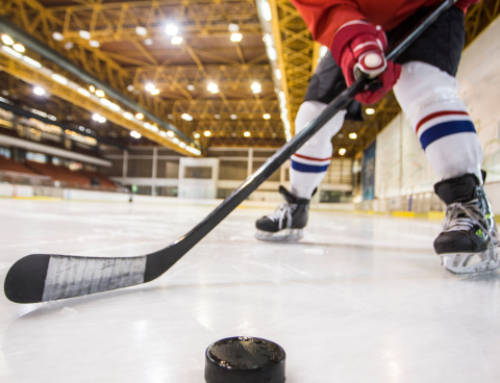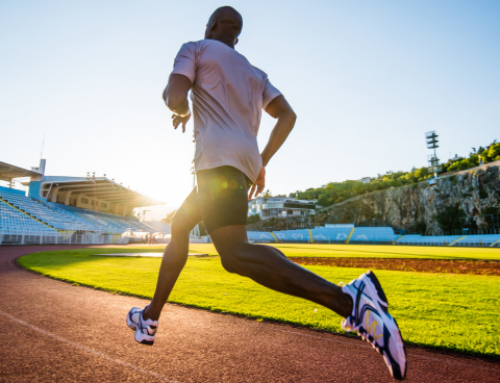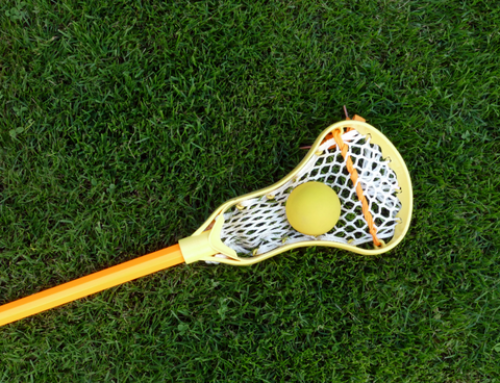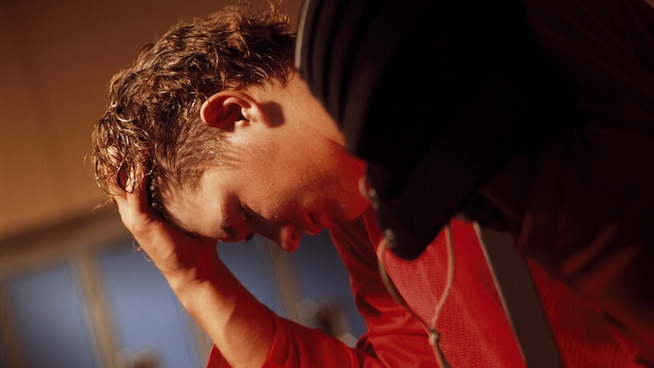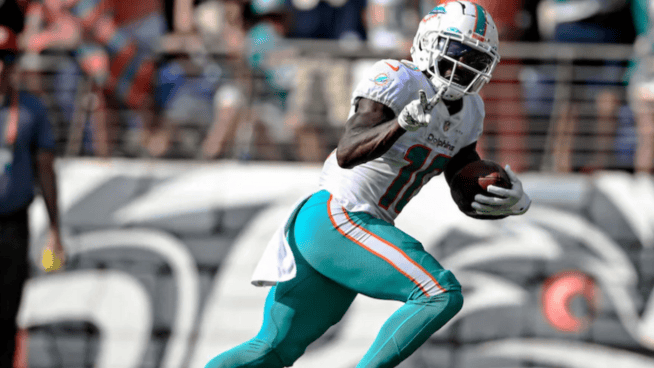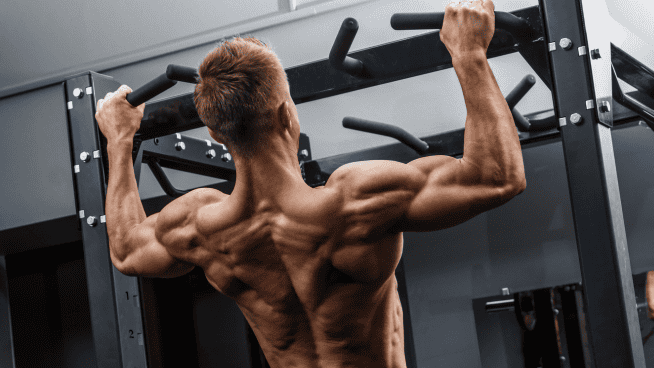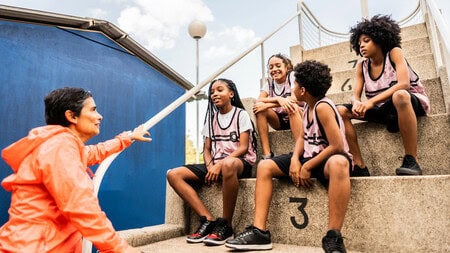Improve Hockey Performance With This 4-Day Off-Season Dryland Workout
![]()
Hockey players are considered to be some of the toughest athletes in the world. While toughness is essential, hockey is a game that requires well-conditioned athletes and strong skill sets. A blend of speed, power, strength and agility helps players perform at their best. To be your best, off-ice hockey training has become mandatory. Teeth are optional.
RELATED: Top 3 Hockey Training Mistakes
To reach your potential on the ice, you need to practice hard and train smart. Strength and conditioning should focus on athletic development and injury prevention. The goals of this article are to address the key strength and condition requirements of hockey training, and to highlight the most prevalent injuries associated with the sport.
Here are some key points to consider when training as a hockey player:
- Like football, basketball and other team sports, hockey is a game of speed and power. The best players are often the most explosive. Keep this in mind when considering whether to lift slowly with max weight or back off the weight and move explosively.
- Though a solid aerobic base is important for athletes, hockey is an anaerobic sport. The game consists of highly intense, short shifts that may only last for 30-45 seconds. Off-ice speed work should mimic the duration of on-ice shifts.
- Top-end speed is important, but acceleration and deceleration are more important for most sports. Hockey is no exception. Developing a quick first step, eccentric strength for deceleration, and change of direction mechanics should be top priorities in the training program.
- Hockey is unique due to the fact it is played on ice. Skating mechanics are much different from sprinting mechanics. While this requires special attention, the majority of your plan should be similar to what is required for any sport that requires speed, power and agility.
- Hockey is a physical game that puts a lot of wear and tear on the body. Include flexibility and mobility training throughout the season.
RELATED: How to Avoid Hockey Conditioning That Slows You Down
An effective strength and conditioning program is also an injury reduction program. Athletes need a plan that will not only get them strong, but that will reduce the likelihood of common injuries associated with hockey. Overuse injuries are possible at all ages, and traumatic injuries occur more frequently as body checking is introduced. Here is a list of the most common injuries associated with hockey:
Concussions. Any player whose head makes hard contact with the ice or boards should be removed immediately and monitored for warning signs. Confusion, disorientation, dizziness are all concussion symptoms.
Shoulder injuries. Shoulder dislocations and collarbone fractures are common as a result of checks into the boards, running into another player or falling on the ice.
Bursitis. Repeated stress from falls or body checks can lead to bursitis (inflammation of the bursa). This condition is often found in the elbows and hips.
Knee Injuries. The medial collateral ligament is most susceptible to a sprain due to the mechanics of skating and contact to the outside of the knee.
Back Injuries. The flexed posture of skating puts players at risk for low-back injuries. Low-back pain and/or pulled muscles are common. Stretching of the hip flexors and a strong core can help prevent these injuries.
Wrist Injuries. Last but not least, the wrist is susceptible to injury when hitting the boards or falling on the ice. Coaching proper technique is key to avoiding this injury. Bracing yourself against the boards using the forearms rather than the hands can help prevent wrist injuries.
RELATED: The 5 Best Core Exercises for Hockey Players
What should my strength and conditioning plan consist of?
- A strong lower body, hips and core are extremely important for hockey players. Training can include plyometrics, Olympic lifts and heavy compound exercises to build explosive athletes who can accelerate and change direction quickly.
- While traditional Deadlifts and Squats can be excellent for building strength, consider adding unilateral exercises such as Rear-Foot-Elevated Split-Squats. In terms of sport-specificity, hockey players push off one leg when skating. Training each leg individually can provide a serious boost to athletic performance.
- Upper-body strength training is also important. Focus on compound exercises such as Chin-Ups, Bench Press and Overhead Press variations. Upper-body plyometrics can also be implemented for explosive power.
- Sprinting should be incorporated to mimic the energy demand of the sport and improve conditioning.
A well-planned routine will help keep you safe and performing at a high level. High quality work in the gym will lead to better results on the ice.
Sample week of training
Good strength and conditioning programs vary training volume, intensity, frequency and exercise selection throughout the year. This helps prevent injury while at the same time improving performance in the weight room and on the ice. During the season, we need to keep the training volume low to avoid injury and fatigue. During the off-season, we can increase intensity and volume to build stronger athletes.
The following routine is an off-season program to improve strength and power. Please note there is no secret recipe. If you aren’t seeing results or progress with a certain exercise, make changes as necessary.
Each workout should begin with the following:
- Foam rolling
- Light stretching
- Mobility work
- A dynamic warm-up (e.g., Jumping Jacks, Bodyweight Squats, Bear Crawls)
Day 1
- Snatch – 3×3
- Barbell Deadlift – 4×5
- Weighted Chin-Ups – 3×4
- Bulgarian Split-Squat – 4×4 per leg
- Inverted Row with Weighted Vest – 4×5
- Farmer’s Walk – 3×50 feet
- TRX Ab Rollout – 3×12
Day 2
- Bench Press – 3×5 (include 2-3 warmup sets for a total of 5-6 sets)
- Standing Overhead Press – 3×5
- TRX Push-Ups – 3×12
- Band Pull-Aparts – 3×20
- Medicine Ball Slams – 3×12
- Plank Reach – 3×12 per arm
Day 3
- Hang Clean – 3×5
- Barbell Lunge – 3×5 per leg
- Dumbbell Row – 4×8 per arm
- Single-Leg Glute Bridge – 4×8 per leg, holding each position for 5 seconds
- Side Plank – 3×60 seconds
Day 4
- Incline Dumbbell Press – 3×5
- Weighted Dips – 3×8
- Medicine Ball Side Throw – 3×8 per side
- Wall Slides – 3×15
RECOMMENDED FOR YOU
MOST POPULAR
Improve Hockey Performance With This 4-Day Off-Season Dryland Workout
![]()
Hockey players are considered to be some of the toughest athletes in the world. While toughness is essential, hockey is a game that requires well-conditioned athletes and strong skill sets. A blend of speed, power, strength and agility helps players perform at their best. To be your best, off-ice hockey training has become mandatory. Teeth are optional.
RELATED: Top 3 Hockey Training Mistakes
To reach your potential on the ice, you need to practice hard and train smart. Strength and conditioning should focus on athletic development and injury prevention. The goals of this article are to address the key strength and condition requirements of hockey training, and to highlight the most prevalent injuries associated with the sport.
Here are some key points to consider when training as a hockey player:
- Like football, basketball and other team sports, hockey is a game of speed and power. The best players are often the most explosive. Keep this in mind when considering whether to lift slowly with max weight or back off the weight and move explosively.
- Though a solid aerobic base is important for athletes, hockey is an anaerobic sport. The game consists of highly intense, short shifts that may only last for 30-45 seconds. Off-ice speed work should mimic the duration of on-ice shifts.
- Top-end speed is important, but acceleration and deceleration are more important for most sports. Hockey is no exception. Developing a quick first step, eccentric strength for deceleration, and change of direction mechanics should be top priorities in the training program.
- Hockey is unique due to the fact it is played on ice. Skating mechanics are much different from sprinting mechanics. While this requires special attention, the majority of your plan should be similar to what is required for any sport that requires speed, power and agility.
- Hockey is a physical game that puts a lot of wear and tear on the body. Include flexibility and mobility training throughout the season.
RELATED: How to Avoid Hockey Conditioning That Slows You Down
An effective strength and conditioning program is also an injury reduction program. Athletes need a plan that will not only get them strong, but that will reduce the likelihood of common injuries associated with hockey. Overuse injuries are possible at all ages, and traumatic injuries occur more frequently as body checking is introduced. Here is a list of the most common injuries associated with hockey:
Concussions. Any player whose head makes hard contact with the ice or boards should be removed immediately and monitored for warning signs. Confusion, disorientation, dizziness are all concussion symptoms.
Shoulder injuries. Shoulder dislocations and collarbone fractures are common as a result of checks into the boards, running into another player or falling on the ice.
Bursitis. Repeated stress from falls or body checks can lead to bursitis (inflammation of the bursa). This condition is often found in the elbows and hips.
Knee Injuries. The medial collateral ligament is most susceptible to a sprain due to the mechanics of skating and contact to the outside of the knee.
Back Injuries. The flexed posture of skating puts players at risk for low-back injuries. Low-back pain and/or pulled muscles are common. Stretching of the hip flexors and a strong core can help prevent these injuries.
Wrist Injuries. Last but not least, the wrist is susceptible to injury when hitting the boards or falling on the ice. Coaching proper technique is key to avoiding this injury. Bracing yourself against the boards using the forearms rather than the hands can help prevent wrist injuries.
RELATED: The 5 Best Core Exercises for Hockey Players
What should my strength and conditioning plan consist of?
- A strong lower body, hips and core are extremely important for hockey players. Training can include plyometrics, Olympic lifts and heavy compound exercises to build explosive athletes who can accelerate and change direction quickly.
- While traditional Deadlifts and Squats can be excellent for building strength, consider adding unilateral exercises such as Rear-Foot-Elevated Split-Squats. In terms of sport-specificity, hockey players push off one leg when skating. Training each leg individually can provide a serious boost to athletic performance.
- Upper-body strength training is also important. Focus on compound exercises such as Chin-Ups, Bench Press and Overhead Press variations. Upper-body plyometrics can also be implemented for explosive power.
- Sprinting should be incorporated to mimic the energy demand of the sport and improve conditioning.
A well-planned routine will help keep you safe and performing at a high level. High quality work in the gym will lead to better results on the ice.
Sample week of training
Good strength and conditioning programs vary training volume, intensity, frequency and exercise selection throughout the year. This helps prevent injury while at the same time improving performance in the weight room and on the ice. During the season, we need to keep the training volume low to avoid injury and fatigue. During the off-season, we can increase intensity and volume to build stronger athletes.
The following routine is an off-season program to improve strength and power. Please note there is no secret recipe. If you aren’t seeing results or progress with a certain exercise, make changes as necessary.
Each workout should begin with the following:
- Foam rolling
- Light stretching
- Mobility work
- A dynamic warm-up (e.g., Jumping Jacks, Bodyweight Squats, Bear Crawls)
Day 1
- Snatch – 3×3
- Barbell Deadlift – 4×5
- Weighted Chin-Ups – 3×4
- Bulgarian Split-Squat – 4×4 per leg
- Inverted Row with Weighted Vest – 4×5
- Farmer’s Walk – 3×50 feet
- TRX Ab Rollout – 3×12
Day 2
- Bench Press – 3×5 (include 2-3 warmup sets for a total of 5-6 sets)
- Standing Overhead Press – 3×5
- TRX Push-Ups – 3×12
- Band Pull-Aparts – 3×20
- Medicine Ball Slams – 3×12
- Plank Reach – 3×12 per arm
Day 3
- Hang Clean – 3×5
- Barbell Lunge – 3×5 per leg
- Dumbbell Row – 4×8 per arm
- Single-Leg Glute Bridge – 4×8 per leg, holding each position for 5 seconds
- Side Plank – 3×60 seconds
Day 4
- Incline Dumbbell Press – 3×5
- Weighted Dips – 3×8
- Medicine Ball Side Throw – 3×8 per side
- Wall Slides – 3×15

